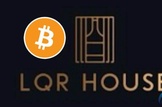
Ethereum Development: Tools and Resources for Developers
Ethereum has emerged as one of the most influential platforms for decentralized applications (dApps) and smart contracts. Its unique characteristics, such as programmability and a robust ecosystem, have attracted a large number of developers eager to build innovative solutions on the blockchain. However, navigating the Ethereum landscape can be daunting, especially for newcomers. Fortunately, a wealth of tools and resources is available to facilitate Ethereum development. This article will explore some of the most essential tools and resources that developers can leverage to enhance their workflow and create successful projects.
Smart Contract Development
At the core of Ethereum development lies the creation of smart contracts using the Solidity programming language. Solidity is a statically typed language designed specifically for Ethereum smart contracts. Developers can use various Integrated Development Environments (IDEs) and editors to write, test, and debug their Solidity code.
One of the most popular IDEs for this purpose is Remix. Remix is a web-based tool that allows developers to write, compile, and deploy Solidity smart contracts directly from the browser. Its intuitive interface comes with a comprehensive set of features, including a static analysis tool that helps identify common security vulnerabilities in smart contracts.
For those looking for a local development environment, Truffle provides a powerful framework for building decentralized applications. It integrates various tools for compiling, testing, and deploying smart contracts while allowing developers to set up a blockchain environment using Ganache, a personal Ethereum blockchain. With Truffle, developers can seamlessly manage multiple contracts, run tests, and deploy their applications with ease.
Testing and Debugging
As smart contracts are immutable once deployed, thorough testing is crucial before launching any Ethereum-based application. Tools like Mocha and Chai are popular choices for JavaScript testing frameworks that work effectively with Truffle. These frameworks allow developers to write unit tests for their smart contracts, ensuring that each function behaves as expected.
In addition to unit testing, security audits are paramount. Tools such as MythX and Slither provide automated security analysis and help detect vulnerabilities in smart contracts. Integrating these tools into the development workflow can significantly reduce the risk of security issues post-deployment.
Front-End Development
Creating an engaging user interface is essential for any dApp. Developers can leverage popular JavaScript frameworks like React, Vue, or Angular to build responsive front ends. To facilitate communication between the front end and the Ethereum blockchain, developers can use libraries like Web3.js or Ether.js.
Web3.js is a JavaScript library that allows developers to interact with the Ethereum blockchain, enabling them to send transactions, call smart contracts, and retrieve block data. Ether.js serves a similar purpose but is known for its lightweight design and TypeScript support. Both libraries provide essential functionalities for integrating Ethereum into dApp front ends.
User Experience and Wallets
For dApps to thrive, they must provide a seamless user experience. Wallet integration is a fundamental aspect of this. MetaMask, a widely-used Ethereum wallet, allows users to manage their digital assets and interact with dApps directly from their browsers. Developers can integrate MetaMask into their applications using the aforementioned Web3.js or Ether.js libraries to streamline the user experience.
Educating the Developer Community
Having access to comprehensive documentation and learning resources is crucial for both novice and experienced developers. The official Ethereum documentation covers a wide array of topics, from smart contract development to dApp deployment. Additionally, platforms like Ethereum Foundation’s learn section and CryptoZombies offer interactive tutorials and courses to help new developers understand the fundamentals of Ethereum programming.
For developers seeking community engagement and support, forums like Stack Exchange, Reddit, and Discord channels provide platforms for sharing knowledge, asking questions, and connecting with other developers. Participating in hackathons and developer meet-ups can also enhance skills and foster collaboration with other enthusiasts in the space.
Conclusion
The Ethereum ecosystem is rich with tools and resources that empower developers to build innovative, decentralized applications. By utilizing IDEs like Remix and Truffle, employing effective testing frameworks, integrating user-friendly wallets, and leveraging educational content, developers can navigate the complexities of Ethereum development with confidence. As the landscape continues to evolve, staying informed about emerging tools and trends will be key to remaining competitive in this dynamic environment. Whether you are a seasoned developer or a newcomer to the blockchain arena, the resources outlined in this article can pave the way for your success in Ethereum development.


 2025-01-23
2025-01-23








